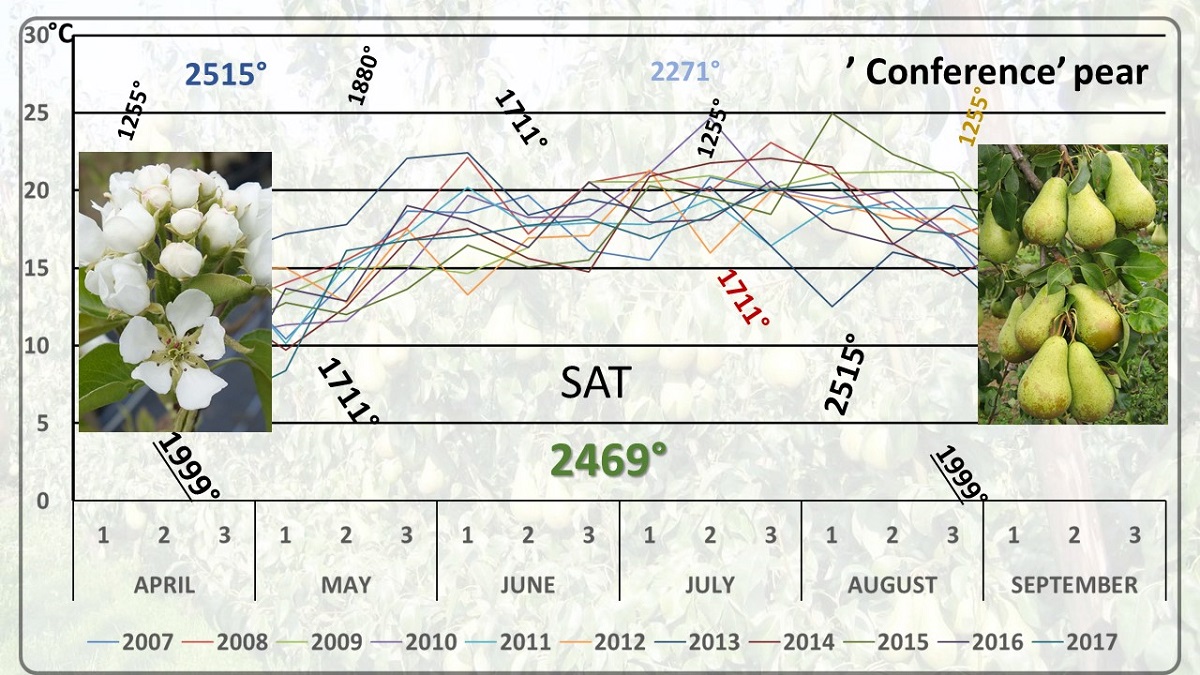The European pear is a climacteric fruit species characterized by high storability. 'Conference', a pear cultivar very popular on the market, can be stored in a CA room without major losses for half a year. However, for ‘Conference’ storage to be successful, the fruit must be harvested fully developed even before it enters the climatic maturation phase. Harvested too early or too late, pears will taste bad, have physiological disorders and will be poorly storable. Among the various methods used to determine the optimal harvest date, the degree-days method, which relies of the sum of active temperatures, seems to be relatively accurate and easy to apply. During 11 years of study, ‘Conference’ pears were harvested on 4 dates (every 4-5 days) chosen based on measurements and observations, and then, after a six-month storage period, the optimum harvest date was determined. During the growing season, temperature was measured using an automatic weather station to calculate the sum of active temperatures from full bloom to the optimal harvest date. Measurements made after storage were analysed and the sum of active temperatures needed for the proper development of ‘Conference’ pear was calculated to be 2469 degree days. The calculations are very accurate because the dispersion calculated using the standard deviation was only 20 °. The base temperature with the smallest error was 0 °. On the basis of the study results, this method can be recommended as useful for determining the optimal harvest date.

